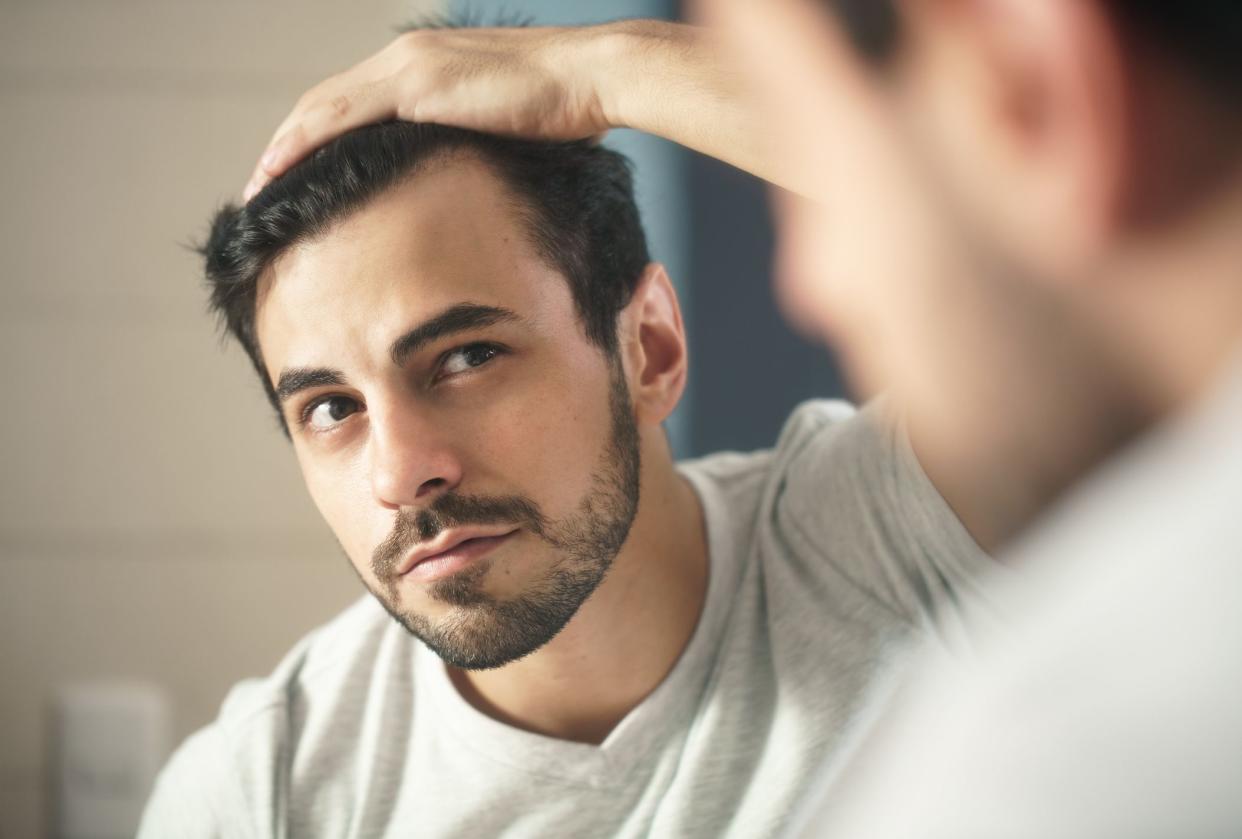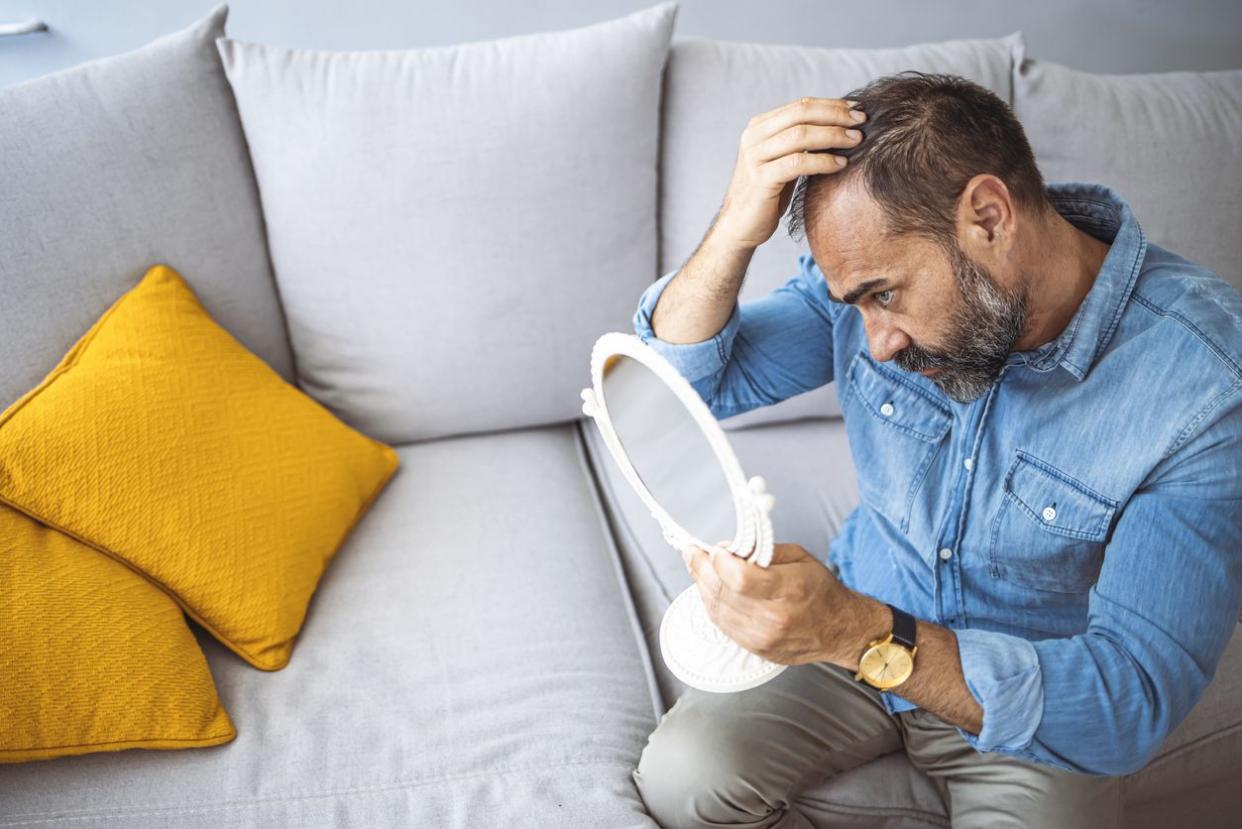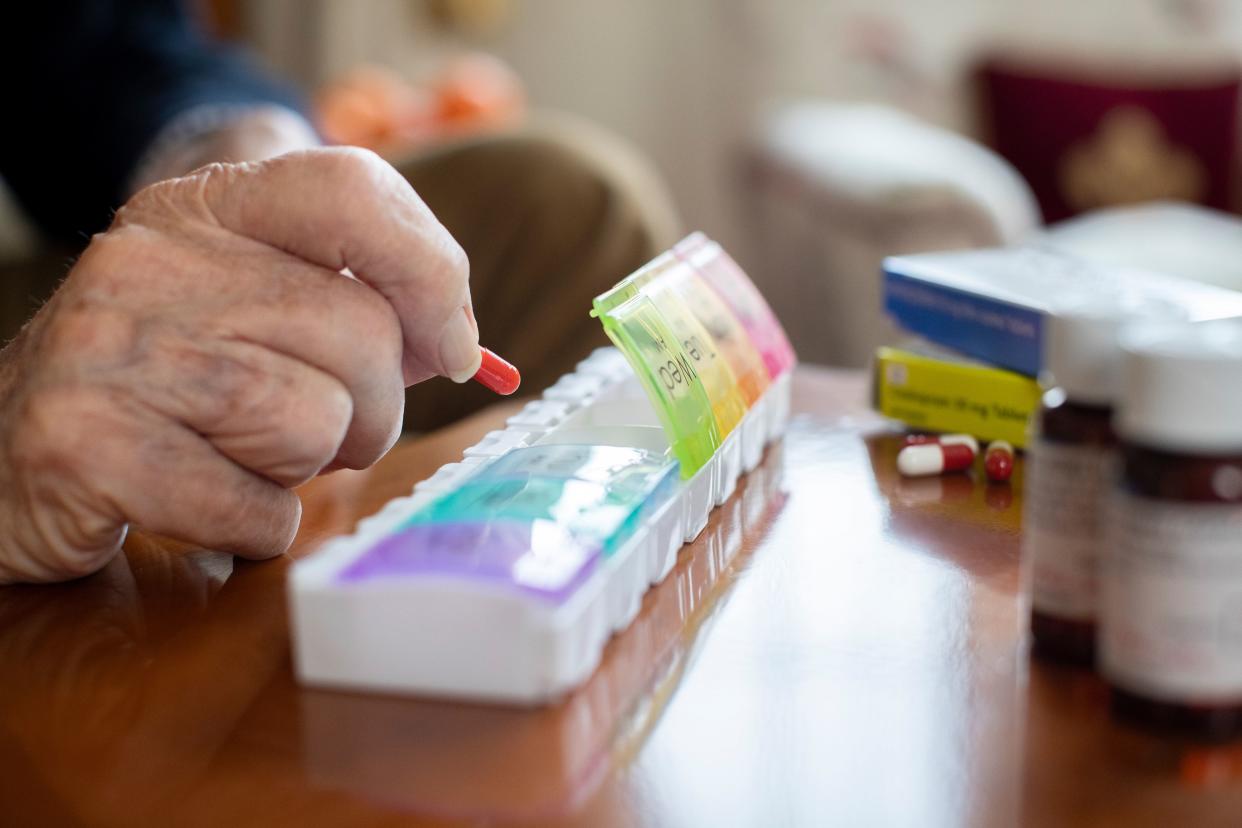Topical vs. Oral Finasteride: Which Is Better?
Reviewed by Knox Beasley, MD
You may know finasteride is a medication commonly used to treat male pattern baldness (androgenetic alopecia). But did you know it comes in different forms?
Finasteride is available as a topical and oral medication. Both forms have their own advantages and drawbacks. It’s important to understand their differences to make an informed decision about which treatment may be best for you.
Stay with us as we explore the similarities and differences between topical versus oral finasteride, including side effects, effectiveness, and cost.


What Is Finasteride?
Finastride was originally developed for the treatment of benign prostatic hyperplasia (BPH), a condition in which the prostate gland becomes enlarged. It was later found to also be effective for treating hair loss.
Finasteride falls into a class of drugs called 5-alpha-reductase inhibitors (5AR). They get their name from the enzyme they block. Blocking this enzyme helps stop the conversion of testosterone into another hormone called dihydrotestosterone (DHT). Collectively, these hormones are called androgens (or male hormones).
Finasteride is sold under the brand names Proscar (for BPH) and Propecia (for hair loss). It’s also available under its generic name — just called finasteride.


DHT, Genetic Hair Loss, and Finasteride
DHT is essential for male health in adolescence and in the womb, having functions such as:
-
Helping in the formation of the private in the womb
-
Promoting prostate growth
-
Stimulating sweat gland activity
-
Contributing to body, facial, and pubic hair growth
DHT doesn’t seem to have a significant role in the physiology of adult males. But unfortunately, this hormone does seem to play a role in the development of male pattern hair loss.
You may have heard before that male pattern baldness is caused by high testosterone levels in the body. This is a prevalent myth, but it isn’t true. Other factors, such as your DHT levels and your hair follicles’ sensitivity to DHT, seem to be the main culprits leading to this condition.
Sensitivity to DHT appears to be largely predetermined by genetics. Men with male pattern baldness also seem to be genetically predisposed to higher levels of 5-alpha-reductase and DHT.
Finasteride comes in two primary forms: oral and topical. Both versions are used for hair loss treatment and can be potentially effective at improving hair density. Let’s look at each of these forms in more detail.


Finasteride Spray vs. Pill for Hair Loss
Oral finasteride is taken as a pill. It’s available with a prescription from a healthcare provider, usually at a dose of 1 milligram per day for hair loss and 5 milligrams per day for BPH.
When taken orally, finasteride works systemically, meaning it has an action throughout the entire body, including the scalp.
The medication inhibits the enzyme 5-alpha reductase, which converts testosterone into DHT. By lowering levels of DHT in the body, finasteride tablets essentially stop the process that leads to thinning hair and, eventually, hair loss.


Efficacy of Oral Finasteride for Hair Loss
Oral finasteride has been shown to be effective at helping many men manage male pattern baldness. Its use has been associated with a reduction of DHT levels in the blood by around 70 percent.
Clinical studies that led to the FDA approval of finasteride for male pattern baldness reported effectiveness in 88 percent of men between 18 and 41 with mild to moderate balding. It seemed to slow balding compared to placebo groups in follow-ups lasting at least five years.
However, the effectiveness of oral finasteride may vary based on the individual, and it might not work for everyone. The treatment tends to be more effective in people with mild to moderate hair loss and less effective for those with advanced balding.
It doesn’t block all DHT, but finasteride may prevent further hair loss and possibly even reverse some hair loss around the hairline or crown. It’s important to remember that finasteride has its limitations and isn’t a cure for male pattern baldness.


Is Topical Finasteride Better Than Oral for Hair Loss?
Topical finasteride, as the name suggests, is applied directly to the scalp. It’s typically administered in a concentration of 0.25% spray or a 1% gel twice per day.
Topical finasteride isn’t yet FDA-approved for treating male pattern baldness. Early studies suggest a good safety profile and effectiveness, but more research is needed to understand the extent of its potential use.
The key difference between topical and oral finasteride is that the topical formulation targets only the scalp area, allowing the medication to work locally without significantly affecting the rest of the body. In theory, this may help reduce some of the potential side effects caused by high concentrations in the blood, like decreased intimacy drive (low libido).
Another topical medication called minoxidil (generic for Rogaine) has already been FDA-approved for treating male pattern baldness, and it may also be effective at increasing hair count.


Efficacy of Topical Finasteride for Hair Loss
The efficacy of topical finasteride is still being studied, but early research suggests it can work just as well as oral finasteride in treating hair loss.
It may even have a better safety profile and fewer systemic side effects (meaning fewer full-body side effects).


Research on Topical Finasteride for Hair Loss
In a 2021 clinical trial, researchers compared the effectiveness of topical finasteride to oral finasteride and a placebo. The researchers found that finasteride concentrations in the blood were more than 100 times lower in the topical group.
The topical and oral groups saw similar effectiveness, but there were fewer side effects with the group taking the topical medications.
Current clinical studies suggest that topical finasteride alone is unlikely to be effective at treating male pattern baldness — but that it might be more effective when combined with minoxidil. That’s why we offer a spray containing both ingredients.
In a 2023 study, researchers found that 5% minoxidil and 0.25% finasteride spray were more effective at treating male pattern baldness than either treatment individually in 42 men in their 20s. The study design was moderate in terms of its potential for bias.
Likewise, in a small 2019 study, researchers found that 0.5% finasteride alone wasn’t effective for treating female-pattern baldness, but it was effective when combined with 2% minoxidil. The study design was also moderate in terms of its potential for bias.


Side Effects of Topical vs. Oral Finasteride
One of the most critical factors to consider when comparing topical versus oral finasteride is the risk of side effects. Both forms of finasteride can have side effects, but their nature and frequency differ.


Side Effects of Oral Finasteride
Oral finasteride can cause a range of side effects. The most common side effects are often mild, but in some cases, they might be significant enough to stop taking the medication.
In three year-long clinical trials of oral finasteride, more people actually had side effects that led to discontinuation in the placebo group than the treatment group.
The most commonly reported side effects of oral finasteride are:
-
Side effects. Potential side effects of oral finasteride include decreased intimacy drive, ED, and reduced semen output.
-
Other side effects. Other potential side effects reported in clinical trials (where higher doses of finasteride were used to treat BPH) include breast enlargement, breast tenderness, and skin rash.


Side Effects of Topical Finasteride
Topical finasteride is thought to have a lower risk of systemic side effects because it primarily acts locally on the scalp. However, side effects can still occur, though they tend to be less severe than those associated with oral finasteride.
Along with side effects reported with oral finasteride, topical products may cause scalp symptoms in some people, such as:
-
Scalp itchiness
-
Burning
-
Irritation
-
Contact dermatitis
-
Redness
Scalp irritation is more likely with higher concentrations of the medication.


Cost Differences Between Oral vs. Topical Finasteride
In terms of cost, topical finasteride products tend to be a little more expensive since they’re less available. But many factors can influence the price, including:
-
Insurance coverage
-
Your location
-
Where you buy it from
-
Whether you’re using generic or brand-name medications
To give you a rough estimate of the typical price range, finasteride tends to go for roughly $20 to $60 per month. Learn more about the cost of finasteride in our pricing guide.


Alternative Treatments for Hair Loss
You can’t do anything about your genetics, but there are a few ways to help manage hair loss. Treatment options and solutions other than finasteride include:
-
Changing your hairstyle to better suit your hair. For example, haircuts with longer bangs can hide a receding hairline.
-
Topical minoxidil. Minoxidil is a topical medication often combined with finasteride, like our two-in-one hair loss spray.
-
Hair transplantation. Hair transplants are becoming an increasingly more common form of hair restoration. The results have improved significantly in recent years.
-
Going without treatment. This may not be your preferred treatment, but nobody says you need to treat hair loss at all. It’s totally up to you.


Switching from Oral to Topical Finasteride: What to Know
Both oral and topical finasteride may help treat male pattern baldness, possibly leading to slowed hair loss or even hair regrowth. Topical finasteride treatment isn’t as commonly prescribed yet because it’s not FDA-approved, but it’s available off-label in some cases.
Topical finasteride offers a promising alternative, particularly for men who experience side effects from oral finasteride. It’s currently only available with a prescription and through compounding pharmacies.
Here’s a look at how the two forms of the medications compare side-by-side.
|
Feature |
Topical Finasteride |
Oral Finasteride |
|---|---|---|
|
Form |
Topical (gel or spray) |
Oral tablet |
|
Mechanism |
Inhibits DHT locally in scalp |
Inhibits formation of DHT throughout body |
|
Effectiveness |
Comparable to oral finasteride |
Proven to slow hair loss and promote regrowth in most men with mild to moderate hair loss |
|
Side Effects |
Potential lower risk of side effects |
Possible dysfunction, reduced semen output, decreased libido |
|
FDA Approval |
Not FDA-approved |
FDA-approved for male pattern baldness and BPH |
|
Availability |
Available from compounded pharmacies |
Brand-name and generic versions available |
|
Ideal For |
Those who want to minimize side effects |
Those who want a well-researched, FDA-approved treatment |


Final Thoughts
If you aren’t sure if you may benefit from either treatment — or which treatment may be best for you — connect with a specialist, such as a dermatologist or another healthcare provider, who can provide medical advice.
-
Related: Finasteride Interactions Guide
-
Related: Post Finasteride Syndrome: What is It?
This article originally appeared on Hims.com and was syndicated by MediaFeed.org.






